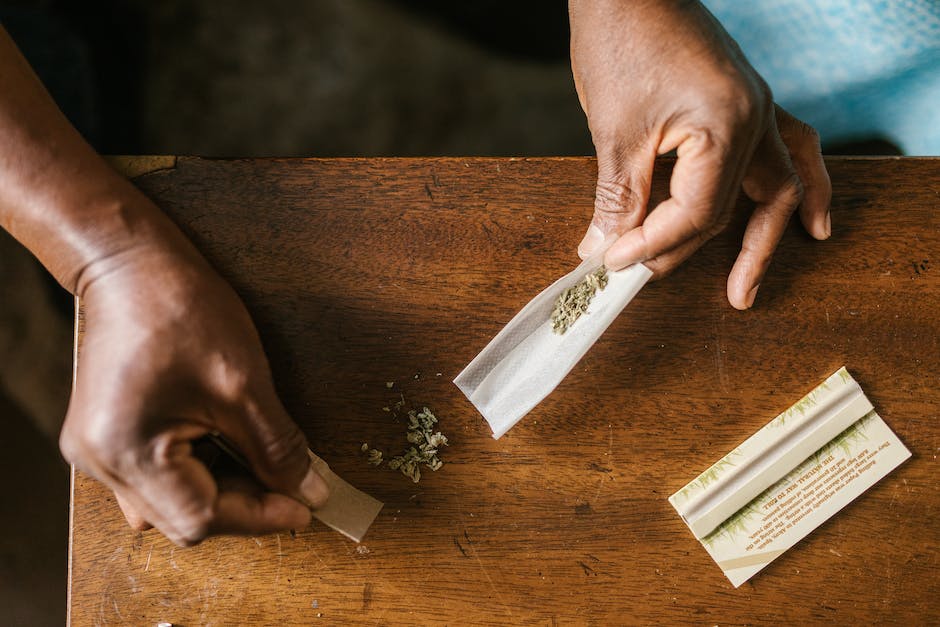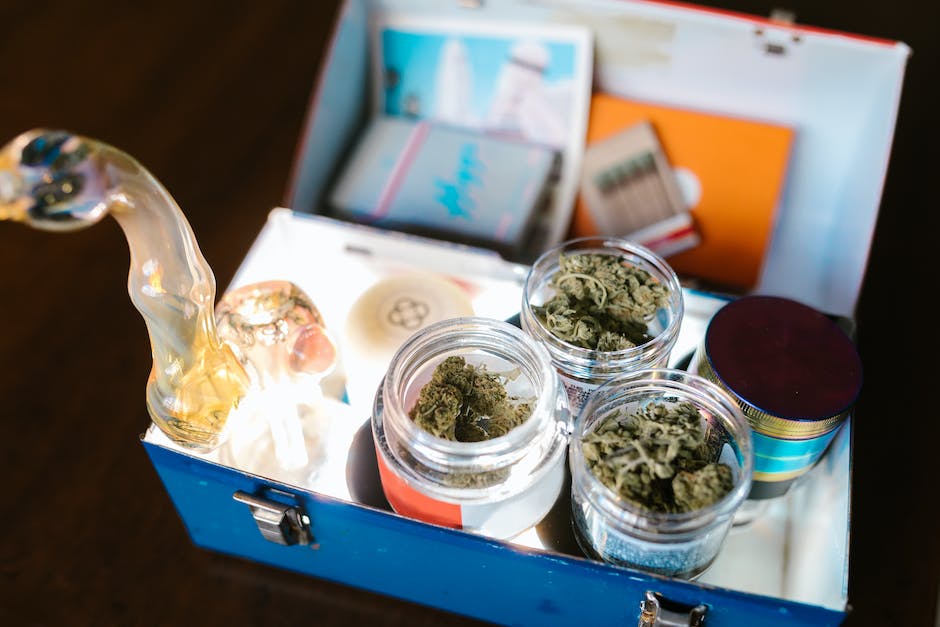Cannabis cultivation has come a long way, evolving from traditional growing methods to more advanced techniques that maximize yields and optimize space utilization. Two popular methods gaining traction in the industry are SCROG (Screen of Green) and SOG (Sea of Green). These methods have revolutionized cultivation practices, allowing growers to achieve higher cannabis yields in a professional and efficient manner.
SCROG involves using a screen or net to create a horizontal canopy, trained to expose all potential bud sites to direct light. This method focuses on optimizing the growth of individual plants by manipulating their canopy to grow horizontally, rather than vertically. By carefully controlling the height of the canopy, growers can ensure that each plant receives an equal amount of light, resulting in more even bud development. Additionally, SCROG allows for better airflow and light penetration throughout the canopy, reducing the risk of mold and increasing overall plant health.
On the other hand, SOG is a technique that involves growing a large number of smaller plants in a limited space. This method eliminates the need for extensive vegetative growth, as it capitalizes on the short flowering time of cannabis plants. By training the plants to have a single dominant cola, growers can maximize their yield per square foot. This method is particularly appealing to commercial cultivators who aim for high production levels while maintaining a manageable plant population.
While both SCROG and SOG have their advantages, they require careful planning and implementation to achieve optimal results. Proper training, regular maintenance, and attentive monitoring are essential elements of these techniques. Additionally, growers must consider factors such as strain selection, lighting, nutrient management, and environmental controls to ensure that the plants thrive and yield the desired quality and quantity of cannabis.
In this blog post series, we will explore the intricacies of SCROG and SOG methods, providing detailed insights into their techniques, benefits, and challenges. Whether you are a home grower looking to increase your personal cannabis production or a commercial cultivator aiming to scale your operations, understanding these innovative cultivation methods will equip you with the knowledge and skills needed to harness high cannabis yields. Stay tuned for our next post, where we will delve into the step-by-step process of setting up and optimizing a SCROG system.
Understanding SCROG: Providing a detailed explanation of the SCROG method, including its history, key principles, and benefits.

The SCROG (Screen of Green) method is a popular technique used by cannabis growers to maximize their yields. Originating in the Netherlands, it was developed as a way to encourage even canopy growth and effective light distribution within the growing space. Understanding the SCROG method involves grasping its history, key principles, and the significant benefits it offers.
The history of SCROG dates back to the early days of cannabis cultivation in the Netherlands. Growers realized that simply growing cannabis plants in a straightforward manner led to uneven growth, with taller plants shading the shorter ones and restricting their access to light. To address this issue, the SCROG method was developed, providing a solution that enhanced both the quality and quantity of cannabis yields.
The key principle of SCROG is to utilize a screen or netting positioned above the plants’ canopy. As the plants grow through the openings in the screen, they are gently intertwined to create an even canopy. By training the plants to grow horizontally along the screen, the lower branches receive better access to light, promoting optimal growth and efficient nutrient distribution.
One of the significant benefits of adopting the SCROG method is the increased yield it offers. By maintaining an even canopy, each plant receives an equal share of light, ensuring consistent growth and bud development. This technique allows cultivators to harness the full potential of each plant, maximizing the overall yield per square foot.
Furthermore, SCROG provides growers with more control over their plants. By gently manipulating the growth patterns and directing the branches through the screen, cultivators can shape their plants to fit their space constraints. This level of control allows for better airflow, reducing the risk of mold and pests, and enhancing the overall health of the plants.
The SCROG method also facilitates better light penetration and utilization. With an even canopy, light can reach all parts of the plant, including the lower foliage. This not only results in more substantial and denser buds but also has the potential to enhance the overall potency and flavor profile of the harvested cannabis.
In conclusion, the SCROG method is an effective technique for maximizing cannabis yields. Its history, key principles, and benefits make it a popular choice among both commercial and hobbyist growers. By understanding and implementing this method, cultivators can take their cannabis cultivation to a whole new level, achieving optimal yields, and ensuring consistent quality in their harvests.
Implementing SCROG: Step-by-step instructions on how to set up a SCROG system, including selecting the right plants, installing a screen, and proper maintenance techniques.

Implementing SCROG: Step-by-step instructions on how to set up a SCROG system, including selecting the right plants, installing a screen, and proper maintenance techniques.
To maximize cannabis yields, growers have long turned to the Screen of Green (SCROG) technique. SCROG involves training plants to grow horizontally along a screen, allowing each branch to receive equal light exposure and ultimately increasing yield. In this section, we will outline a step-by-step guide on implementing SCROG in your cannabis cultivation process.
1. Select the Right Plants:
Begin by choosing cannabis strains that are known to respond well to SCROG. Indica-dominant strains with bushy growth patterns are often preferred due to their ability to produce multiple strong branches. Look for strains with a reputation for high yields and vigorous growth.
2. Prepare the Growing Space:
Ensure you have ample space for the SCROG system. Ideally, use a large, open area or a dedicated grow tent where plants can be properly spaced. The size of the screen will depend on the available space and the number of plants you plan to grow. Remember to leave enough room for maintenance and air circulation.
3. Install the Screen:
Place the screen at a height that allows plants to grow beneath it comfortably. It’s important to secure the screen firmly to support the weight of the branches. Traditionally, a square or rectangular screen made of a sturdy material such as plastic or metal is used. Attach the screen tightly to the grow space walls or framework.
4. Begin Training:
After the plants have established a sufficient number of branches, gently weave and tuck them through the openings in the screen. This process should be started when the plants are in the vegetative stage. Depending on the size of the screen, you may need to prune the lower branches and leaves to ensure adequate light penetration.
5. Continue Maintenance:
Regularly monitor the growth of your plants and adjust the branches as needed to maintain an even canopy. As they grow vertically, guide the branches horizontally along the screen, encouraging lateral development. Use soft ties, plant clips, or twine to secure the branches to the screen, ensuring they don’t snap under the weight of the buds.
6. Provide Adequate Lighting:
To achieve optimal results, ensure your plants are receiving proper lighting. Position the grow lights at an appropriate distance from the canopy, taking into consideration the plants’ growth stage and the specific light requirements of your cannabis strain. Regularly check the distance to prevent burning or stretching of the plants.
7. Maintain Airflow and Nutrient Balance:
Proper airflow is crucial in preventing mold and mildew issues. Make sure to trim any excessive foliage blocking airflow and maintain a suitable humidity level. Additionally, maintain a balanced nutrient regimen tailored to the flowering stage to support healthy growth and maximize bud development.
Implementing a SCROG system can significantly increase cannabis yields when done correctly. By selecting the right plants, installing a properly positioned screen, and maintaining meticulous care throughout the growth cycle, you can harness the full potential of your cannabis garden. Stay tuned for the next section where we will explore the Sea of Green (SOG) technique and its benefits.
Advantages of SCROG: Discussing the advantages of utilizing SCROG, such as maximizing space, achieving uniform growth, and increasing overall yields.

SCROG, which stands for Screen of Green, is a highly effective technique used by cannabis cultivators to optimize their yields. By understanding the advantages of utilizing SCROG, growers can leverage this technique to maximize space, achieve uniform growth, and ultimately increase overall yields.
One of the main advantages of SCROG is its ability to make the most efficient use of limited space. With the use of a horizontal screen or a net, plants are trained to grow horizontally rather than vertically. This method allows cultivators to utilize the entire surface area of their grow space, ensuring that no space is wasted. By spreading out the plant canopy across the screen, each plant receives equal access to light, nutrients, and air circulation, promoting healthy and vigorous growth.
Another significant advantage of SCROG is the ability to achieve uniform growth among the plants. By training the branches to grow through the screen, cultivators can ensure that each plant receives equal exposure to light. This technique helps to eliminate overcrowding and shading, preventing the lower branches from being shaded by the canopy above. As a result, all parts of the plant receive sufficient light, leading to a more even distribution of growth and allowing for the development of multiple budding sites.
Uniform growth is not only aesthetically pleasing but also has a direct impact on overall yields. By extending the canopy horizontally, SCROG helps to create more top colas, which are the primary sites for bud development. This technique encourages the plants to focus their energy on bud production rather than excessive vegetative growth. Having multiple budding sites allows for an increased number of flowers to develop, ultimately leading to higher yields.
In addition to maximizing space and achieving uniform growth, SCROG offers another advantage – improved light penetration and airflow. The trained branches create an open and airy canopy, allowing for better light distribution throughout the plant and providing ample air circulation. This reduces the risk of disease and pest issues while enhancing the overall health and vitality of the plants. Proper airflow also helps to maintain optimal temperature and humidity levels, further promoting healthy growth and preventing any potential problems.
In conclusion, utilizing the SCROG technique in cannabis cultivation provides several advantages that can significantly boost yields. By maximizing space, achieving uniform growth, and enhancing light penetration and airflow, cultivators can create an optimal environment for their plants to thrive. Whether you are a novice or experienced grower, incorporating SCROG into your growing practices can help you unlock the secrets to high cannabis yields.
Challenges of SCROG: Identifying potential challenges or drawbacks with SCROG, such as initial investment, increased maintenance, and slower plant growth.

While SCROG (Screen of Green) can be an effective cultivation technique for maximizing cannabis yields, it does come with its fair share of challenges. It’s important for growers to understand and be prepared for these potential drawbacks before diving into the SCROG method.
One of the primary challenges that cultivators may face with SCROG is the initial investment required. Implementing a SCROG system can involve purchasing additional equipment, such as screens, trellises, and even specialized grow lights. These investments can add up quickly, especially for small-scale growers or those on a tight budget. However, it’s crucial to consider that the long-term benefits of increased yields may outweigh the initial costs.
Another challenge of SCROG is the increased maintenance it demands compared to traditional cultivation methods. The process involves training and supporting plants as they grow horizontally, which requires meticulous pruning, bending, and weaving. This hands-on approach may be time-consuming and labor-intensive, as each plant requires individual attention and care. Growers need to be ready to invest substantial time and effort into managing the SCROG system properly.
Furthermore, an aspect that needs consideration is the potential slower plant growth associated with SCROG. Due to the extensive training and pruning involved, plants may initially grow at a slower pace compared to traditional methods. This slower growth can be attributed to the time it takes for the plant to recover from the pruning and redirect its energy towards producing new growth. Patience is crucial when implementing SCROG, as it may take a bit longer to achieve the desired results.
In summary, while SCROG is an efficient technique in boosting cannabis yields, it does present some challenges that growers should be aware of. These challenges include the initial investment required for purchasing SCROG equipment, the increased maintenance demands, and the potential slower plant growth. By identifying these potential hurdles in advance, cultivators can plan accordingly and make informed decisions about implementing SCROG in their cannabis cultivation practices.
Understanding SOG: Providing an overview of the SOG technique, its origins, and how it differs from SCROG.

Understanding SOG:
When it comes to maximizing cannabis yields, one popular technique that growers often turn to is the Sea of Green (SOG) method. Developed in the Netherlands in the late 1980s, the SOG technique focuses on cultivating a large number of smaller plants that mature quickly and produce impressive yields.
Unlike its counterpart, the Screen of Green (SCROG) method, which utilizes a screen or net to train plants horizontally, SOG takes a vertical approach. With SOG, the emphasis is on creating a dense canopy of plants that closely resemble a sea of green, hence the name.
The main goal of the SOG technique is to fill as much space as possible with cannabis plants. By utilizing small pots and reducing the vegetation period, growers can effectively shorten the overall grow cycle and harvest more frequently. The plants are kept in the vegetative stage for a shorter duration compared to other methods, allowing for quicker turnaround time.
One of the key advantages of SOG is its ability to maximize space utilization. By densely packing several plants together, growers can achieve a higher yield per square meter than with traditional methods. This makes SOG particularly attractive for commercial growers who aim to produce large quantities of cannabis efficiently.
SOG requires careful planning and management. To ensure each plant receives optimal light distribution and air circulation, strict pruning and training techniques are employed. Lower branches and foliage are regularly removed to redirect energy towards bud production and to prevent overcrowding. This enables the plants to focus energy on developing fewer, but larger, colas, resulting in a higher yield per plant.
The SOG technique is highly versatile and can be adapted to various growing environments, including indoor and greenhouse setups. By utilizing artificial lighting and controlling environmental factors such as temperature, humidity, and air circulation, indoor growers can create an ideal environment for SOG cultivation.
While SOG offers impressive yields, it is worth noting that it may not be suitable for all cultivators or strains. The technique requires a good understanding of plant management and can be more time-consuming compared to other methods, especially during the pruning and maintenance stages. Additionally, some cannabis strains may not be well-suited for the condensed growth style of SOG.
In conclusion, if you’re looking to maximize your cannabis yields and have the necessary expertise and resources, the SOG technique can be an excellent choice. Understanding the principles behind SOG, its origins, and how it differs from other methods like SCROG is crucial in deciding which approach would work best for your specific needs and goals. With careful planning and execution, SOG can unlock the potential for bountiful harvests and contribute to the success of your cannabis cultivation endeavors.
Implementing SOG: Step-by-step instructions on how to implement the SOG method, including plant selection, spacing, and appropriate lighting and nutrient requirements.

Implementing SOG: Step-by-step instructions on how to implement the SOG method, including plant selection, spacing, and appropriate lighting and nutrient requirements.
To achieve high cannabis yields using the Sea of Green (SOG) method, careful planning and implementation are crucial. The SOG method involves growing a larger number of smaller plants, allowing for quicker turnover and maximizing space utilization. In this section, we will provide you with step-by-step instructions on how to successfully implement the SOG method in your cannabis cultivation process.
1. Plant Selection:
Choosing the right strain is crucial for a successful SOG setup. Look for strains that are known for their compact size, rapid growth, and high yield potential. Indica or hybrid strains generally work best for SOG, as they tend to stay shorter and bushier, ideal for optimizing space.
2. Spacing:
To make the most of your limited space, it is essential to plan the spacing between plants carefully. Provide each plant with enough room to grow and receive adequate light and airflow. Aim for a density of 6-12 plants per square meter, depending on the strain’s vigor and growth characteristics.
3. Lighting:
Since SOG involves growing multiple small plants, you need enough light intensity to ensure proper growth and development. Opt for high-intensity discharge (HID) lights like metal halide (MH) or high-pressure sodium (HPS) lights, which offer the necessary intensity for dense foliage growth. Hang the lights at an appropriate height to distribute the light evenly and prevent hotspots or light burn.
4. Nutrient Requirements:
To support rapid growth and maximize yields, it is crucial to provide your plants with a balanced nutrient regimen. Use a high-quality, cannabis-specific nutrient solution that includes macro and micronutrients suitable for the specific stage of growth. Follow the manufacturer’s guidelines and adjust nutrient levels based on your plants’ needs, keeping in mind that smaller plants may require less fertilization than larger ones.
5. Training and Pruning:
Training and pruning your plants are essential aspects of the SOG method. It involves manipulating plant growth to create an even canopy and encourage buds to develop uniformly. Techniques like topping, low-stress training (LST), and defoliation can help maintain an even height and increase bud production. Regular pruning and removing lower branches will focus energy on the top colas, enhancing overall yield potential.
6. Environmental Factors:
Creating a favorable environment is crucial for successful SOG cultivation. Maintain an optimal temperature between 70-80°F (20-26°C), with proper humidity levels between 40-60%. Good ventilation and air circulation will prevent mold and pests, ensuring healthy plant growth. Keep an eye on pH and EC levels in your nutrient solution, ensuring they remain within the recommended range for cannabis cultivation.
By carefully implementing the SOG method and adhering to these step-by-step instructions, you can increase your cannabis yield while maximizing your limited space. Remember, regular monitoring, adjusting, and making necessary modifications are essential to optimize your SOG setup and achieve the desired high yields.
Advantages of SOG: Highlighting the advantages of SOG, such as faster harvest cycles, consistent yields, and ease of maintenance.

Advantages of SOG:
When it comes to maximizing cannabis yields, the Sea of Green (SOG) technique has proven to be a reliable and efficient method for professional growers. SOG offers numerous advantages that make it an appealing choice for those looking to harness high cannabis yields consistently. In this section, we will highlight some of the key advantages of the SOG method.
1. Faster Harvest Cycles: One of the most significant advantages of SOG is its ability to shorten the overall cultivation timeline. By utilizing many small plants instead of a few larger ones, the vegetative stage can be minimized, leading to faster flowering times and subsequent harvests. This means that cultivators can enjoy a more rapid turnover of crops, resulting in increased productivity and profitability.
2. Consistent Yields: With SOG, growers can expect consistent yields across each crop cycle. By utilizing a large number of smaller plants per square foot, the risk of having a few underperforming plants is mitigated. Even if some plants do not reach their full potential, the sheer quantity ensures that overall yields remain stable and robust. This consistency is particularly appealing for commercial growers who rely on a dependable supply to meet market demands.
3. Ease of Maintenance: Compared to other cultivation methods, SOG requires relatively less maintenance. The focus on smaller plants means that the overall pruning and training required is significantly reduced. Trim work and canopy manipulation are simplified, allowing growers to allocate their time and resources more efficiently. With fewer demands on maintenance, cultivators can often scale their operations more easily, putting less strain on labor and resources.
4. Space Optimization: SOG enables growers to make the most efficient use of their available growing space. The smaller plants can be placed closer together, maximizing the production area and ensuring no valuable space is wasted. This advantage is particularly valuable in indoor setups where space may be limited. By optimizing the use of space, growers can increase their overall output and make better use of the available resources.
In conclusion, the SCROG technique offers a range of advantages that make it an attractive option for professional cultivators. Faster harvest cycles, consistent yields, ease of maintenance, and space optimization are just some of the benefits that SOG brings to the table. By harnessing these advantages, growers can achieve exceptional results and set themselves apart in the competitive cannabis industry.
Challenges of SOG: Discussing potential challenges or limitations in using SOG, such as reduced opportunity for plant training or individual plant care.
As cannabis cultivation continues to evolve, growers are constantly seeking ways to maximize their yields while maintaining quality. One popular technique gaining attention in the cannabis community is the Sea of Green (SOG) method. While SOG offers definite advantages in terms of efficiency, it is important to be aware of the potential challenges or limitations it presents.
One of the significant challenges of the SOG method is the reduced opportunity for plant training and individual plant care. With this technique, multiple plants are densely packed together, often leading to limited space for each plant to grow and thrive independently. As a result, it becomes difficult to implement traditional training techniques such as Low-Stress Training (LST), High-Stress Training (HST), or even pruning and topping.
The lack of plant training options can hinder the grower’s ability to manipulate the plants for optimal light distribution and bud development. This is particularly crucial for maintaining an even canopy and preventing light blockage. Without the ability to train each plant individually, there is a risk of inconsistent growth, with some plants overshadowing others and potentially reducing overall yields.
Additionally, the tightly packed nature of the SOG method can make it challenging to address individual plant health issues. When plants are closely spaced, it becomes difficult to identify and address specific problems that might arise. Pests and diseases can spread quickly among plants, impacting the entire crop. Lack of access and maneuverability within the densely packed canopy can also complicate pest management and plant maintenance practices.
Furthermore, the reduced opportunity for individual plant care in the SOG technique means that plants may not receive the personalized attention they might require. Each plant has unique characteristics, needs, and growth patterns. Without the ability to address these individually, growers might miss the chance to optimize the potential of each plant, potentially impacting the overall quality and yield of the crop.
While the SOG method is undoubtedly efficient and allows for high plant density, it is essential to consider the potential challenges associated with reduced plant training and individual care. Experienced growers often find ways to work around these limitations by incorporating other techniques, such as strategic lollipop pruning or implementing preventive measures to address common plant health issues.
Ultimately, as with any cultivation method, a balance must be struck between maximizing yields and providing individual plant care. By understanding and acknowledging the hurdles that come with the SOG approach, growers can make informed decisions and adapt their practices accordingly to harness the full potential of high cannabis yields.

